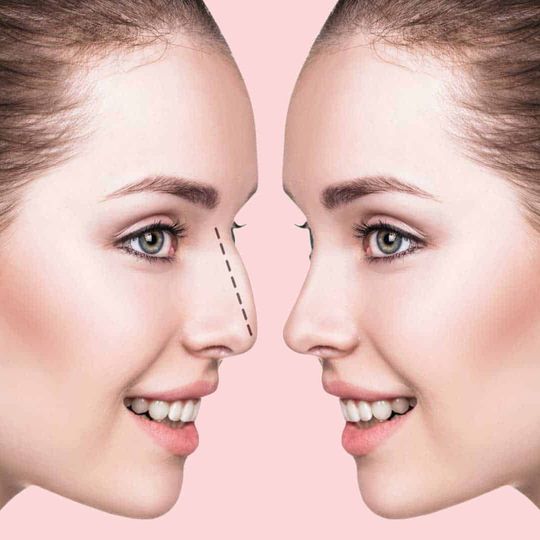What Is Secondary Rhinoplasty (Revision Rhinoplasty)? How Is It Performed?
What Is Secondary Rhinoplasty (Revision Rhinoplasty)?
Secondary rhinoplasty, also known as revision rhinoplasty, is the re-operation of a person who has previously undergone rhinoplasty due to an aesthetic or functional defect that could not be corrected despite the surgery or that occurred after the surgery. .
If the second surgery involves more than one area of the nose and additional procedures such as cartilage grafting, the procedure is called revision or secondary rhinoplasty. If the second surgery involves only a minor intervention in only one area of the nose, it is referred to as retouching operation.
Why Is Secondary (Revision) Rhinoplasty Performed?
Cases requiring revision rhinoplasty (secondary rhinoplasty) can be mainly classified into two groups. The first category includes deformities caused by obvious errors made by inexperienced surgeons, particularly those who are not plastic surgeons.
Some of these include nasal ridges excessively rasped down, weakened nasal support and nasal collapse caused by excessive septal cartilage removal, inadequate nasal tip height, separate and deviated nasal bones, excessive or inadequate nasofrontal (nose-forehead) angle and nasonasolabial (nose-upper lip) angle, a short nose, and excessively upturned nose.
Under general anesthesia, the nose is reopened, the missing cartilage tissues are replaced (by taking cartilage from the inside of the nose, auricle, or rib), and the nose is reshaped.
On the other hand, a second surgical intervention (even if minor) may be needed even after 5-10% of surgical operations performed by the most experienced surgeons. Examples of these are small irregularities in the nasal ridge and asymmetries in the nasal tip or nasal wings. Especially during the wound healing period, not all sides of the nose may heal homogeneously, resulting in minor swelling, retraction, or irregularities. In some cases, there is excessive stiffness and swelling on the nasal tip, which can be treated with local cortisone injections.
When Can A Secondary Rhinoplasty Operation Be Performed?
The secondary rhinoplasty must be performed at least one year after the first rhinoplasty. This period of time is critical for the nose to return to its natural state after surgery. Otherwise, the success rate of the secondary rhinoplasty will decrease.
How Is Secondary Rhinoplasty Performed?
If cartilage grafting is required for a secondary rhinoplasty operation but there is inadequate cartilage in the nose, it may be necessary to take cartilage from the patient’s ear or rib region. Since mostly all cartilages are removed during the first surgery, It is a common practice to use cartilages taken from the ear and rib regions. On the other hand, ready-made synthetic materials such as medpor can be used instead of cartilage in some special cases.
Secondary rhinoplasty can be performed using either an open or closed technique. The technique to be used can be determined by the surgeon .after the examination.
A secondary rhinoplasty operation involves the correction of the problematic parts of the nose such as the nasal ridge, nasal tip, nasal wings, nostrils, etc., which are important in terms of both aesthetics and function. The surgeon determines the surgical plan after a thorough nose examination and an interview with the patient.





